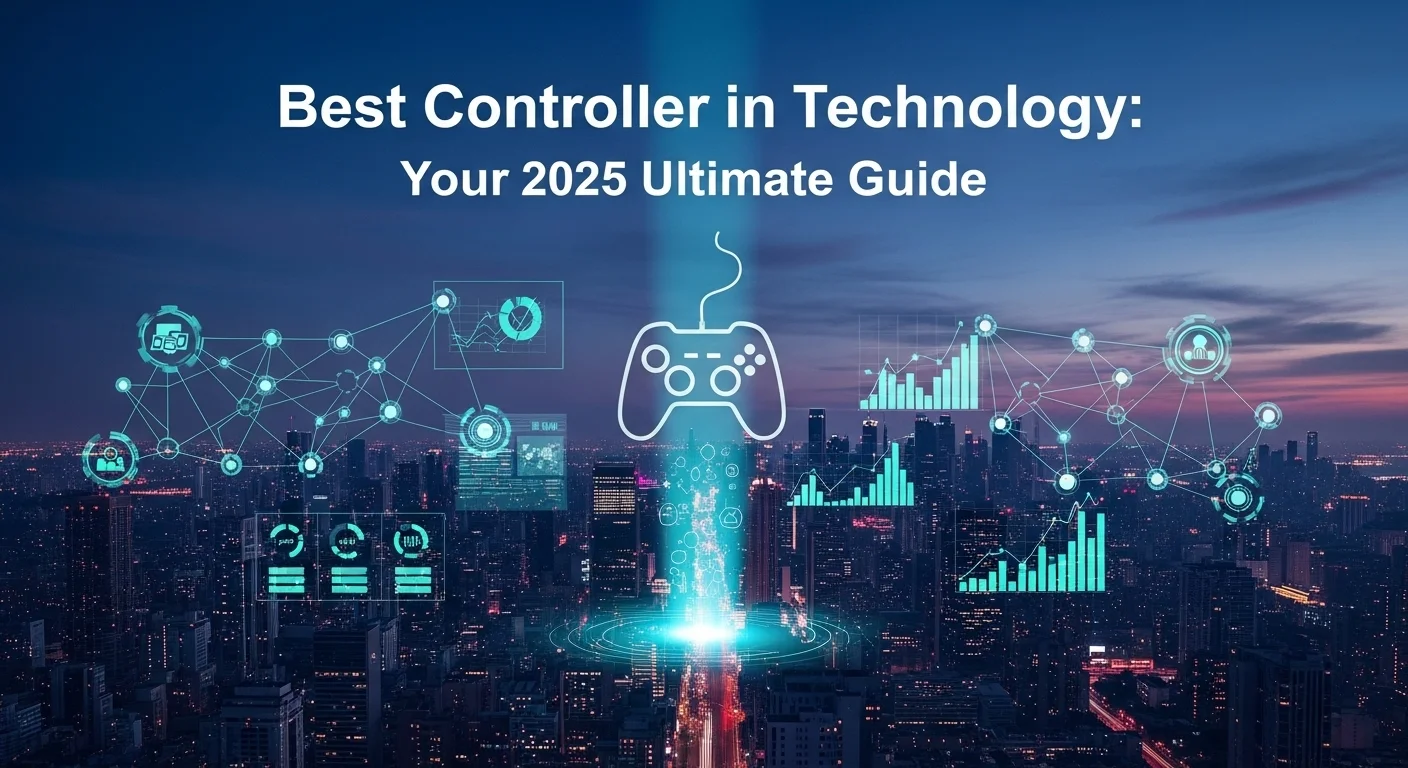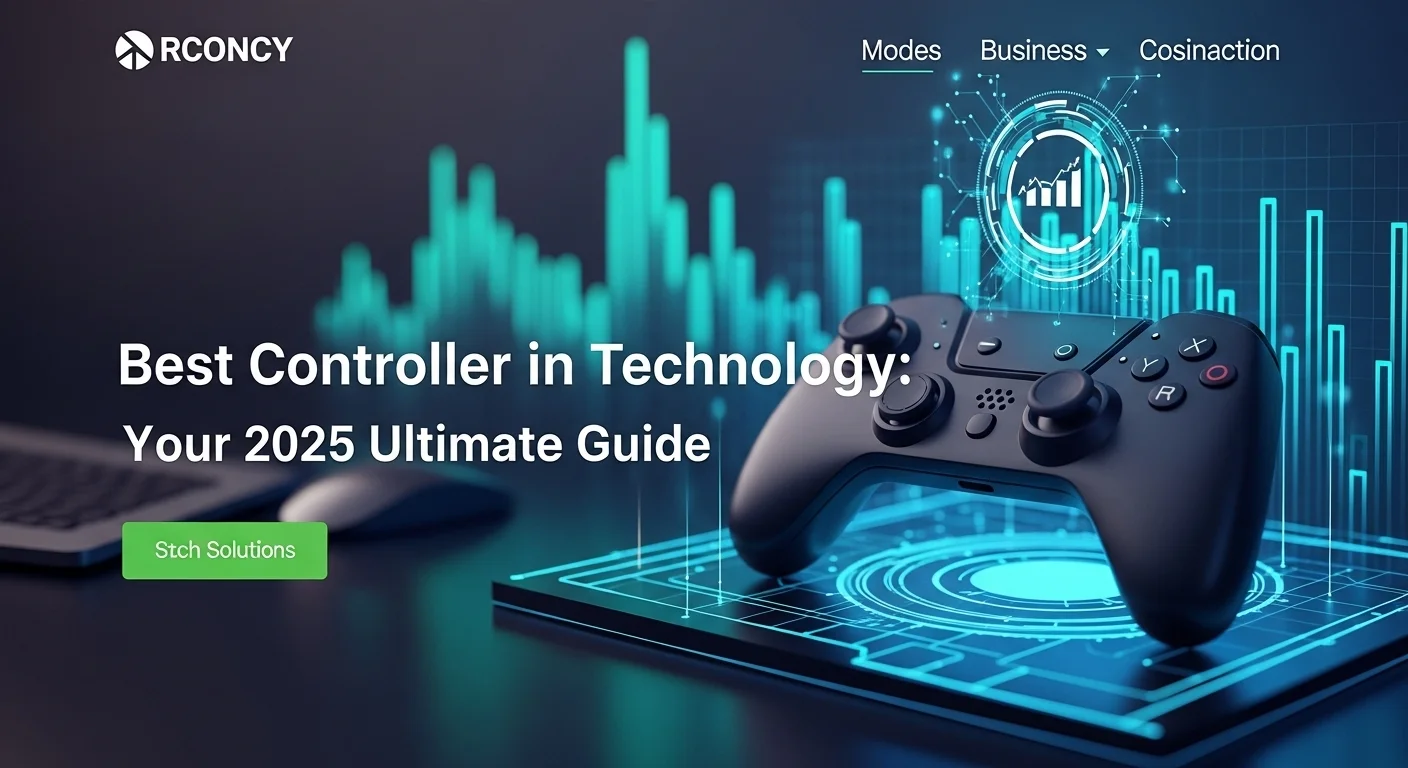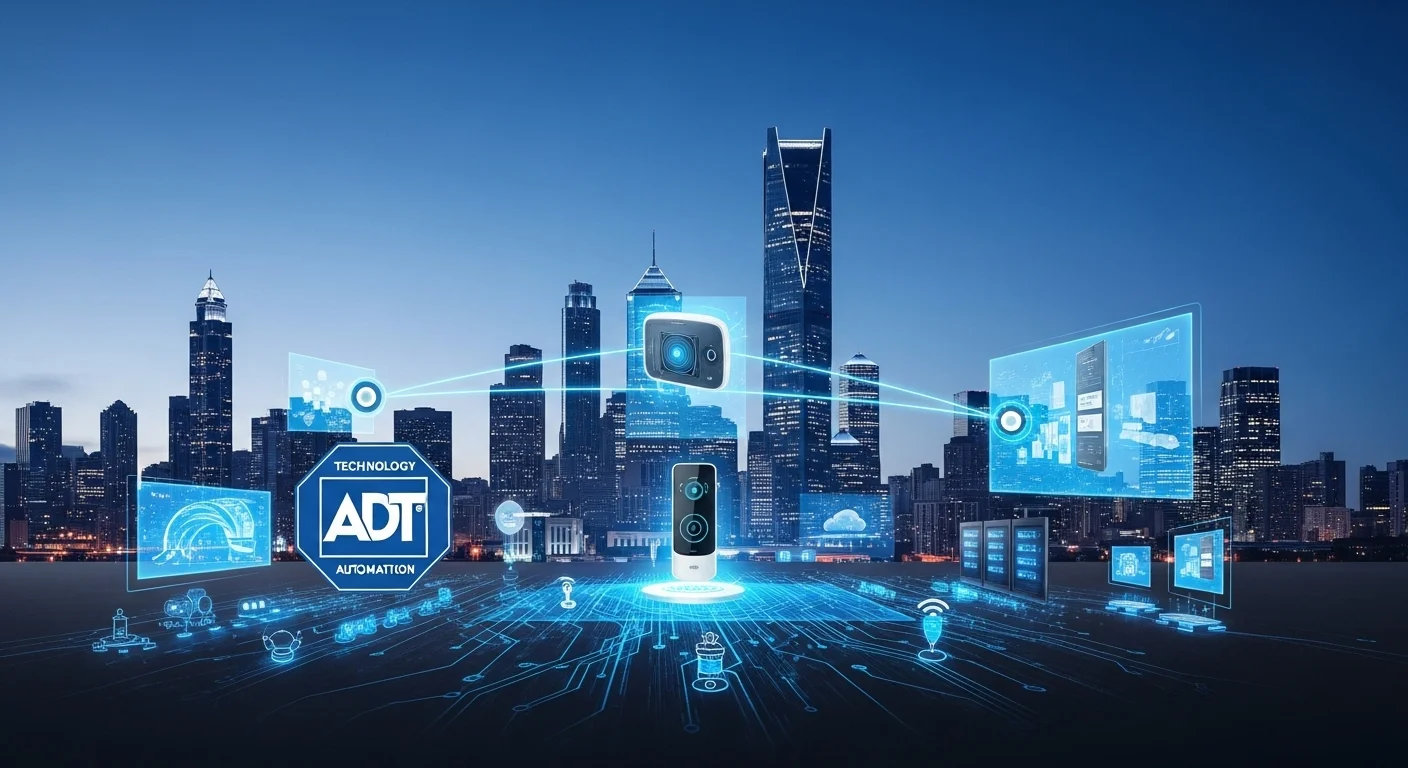Finding Your Smart Home's Brain: A Real-World Guide to the Best Controller

Executive Summary
I remember my first so-called 'smart home.' In reality, it was just a chaotic collection of gadgets from different brands that refused to talk to each other. The real magic, the moment it all clicked, was when I found the right 'brain'—a central controller. This guide is born from that experience. We're going to cut through the jargon and explore what a smart controller really is and how it can transform a pile of tech into a seamless, intelligent environment. We'll look at everything from simple control panels to robust systems that act as the true heart of your home or business automation. Think of this as your personal roadmap to choosing the right hub, understanding the tech that powers it all, and making your space more efficient, secure, and genuinely helpful.
Table of Contents
- What Exactly Is a Smart Controller?
- Why Your Smart Devices Need a Central Brain
- The Power of Local Control vs. The Cloud
- How AI is Making Controllers Even Smarter
- The Business Case for a Smart Controller
What Exactly Is a Smart Controller?
In a world buzzing with smart devices, the term 'controller' has become the most important piece of the puzzle. Forget simple remotes; a modern controller is the central nervous system for your smart environment, whether that's your house, your office, or a small shop. Think of it as an orchestra conductor. You can have the best musicians (your smart lights, locks, and sensors), but without a conductor to tell them when and how to play, all you have is noise. A controller brings them all together to create a beautiful symphony of automation. Its job is to make a multitude of different devices, often from different manufacturers, work together in perfect harmony. The goal isn't just automation; it's about creating a space that's responsive, intelligent, and efficient. I can tell you from experience, this is the key that unlocks the true power of the Internet of Things (IoT). Without a good controller, you have a box of cool but disconnected gadgets. With one, you have a truly smart ecosystem that can make life easier, bolster security, and even save you money on energy bills.
Why Your Smart Devices Need a Central Brain
At its heart, a smart controller, or hub, acts as a master translator. In the wild west of smart technology, devices speak different languages—or protocols. You've probably heard of the main ones: Zigbee, Z-Wave, Wi-Fi, and Bluetooth. Now, new standards like Thread and Matter are joining the conversation. A top-tier controller is multilingual. It allows your Philips Hue light bulb (which speaks Zigbee) to get a command from your Yale smart lock (which might speak Z-Wave) when you arrive home. This interoperability is the bedrock of a smart system. The controller takes a signal from a sensor (like a door opening), thinks about the rules you've set, and sends commands to other devices. A simple example I use every day: 'If my front door unlocks between 5 PM and 10 PM, turn on the entryway light and set the thermostat to 70 degrees.' That simple, helpful action requires a central brain to coordinate everything, and that's exactly what the best home control hub does.
The Power of Local Control vs. The Cloud
The technical importance of these controllers shines in a few key areas. First, data management. A smart home is a data factory, constantly producing temperature readings, energy stats, and security alerts. A powerful controller can process most of this data right there in your home, a concept known as edge computing. I learned the value of this the hard way during a winter storm that knocked out my internet. Because my controller processed things locally, my automated lights and thermostat schedules kept running flawlessly. This local processing means faster responses (no round trip to a server), better privacy (your data stays home), and reliability when the internet fails. This is a defining feature of the best home control systems. For a business, this local data can be a goldmine. Imagine a small cafe using a controller to track foot traffic, automatically adjusting the lights and music for the morning rush versus the afternoon lull. The controller becomes a business intelligence tool, right on site.
How AI is Making Controllers Even Smarter
This is where things get really exciting. The integration of Artificial Intelligence (AI) is transforming controllers from simple 'if-then' machines into systems that learn and adapt. An AI-powered controller observes your family's routines. It might notice you always turn the heat down at 11 PM and start doing it for you. It can spot anomalies that you might miss, like a sudden energy spike that could mean an appliance is failing, or unusual motion patterns that might be a security concern. This predictive ability is what separates a good controller from a great one. AI also makes everything feel more natural. Instead of robotic commands, you can say, 'Hey Google, it's movie time,' and the controller can execute a 'scene' that dims the lights, lowers the blinds, and turns on the TV. It understands your intent, not just a specific command.
The Business Case for a Smart Controller
For small and medium-sized businesses, this technology is a game-changer. A smart controller can be the foundation of a smart office or retail space. Think of a small accounting firm: a controller manages access, letting employees in with their phones while keeping a log. It automates the conference room—a meeting is booked, and the controller turns on the projector and sets the climate. This isn't just about impressing clients; it streamlines the workday. The biggest win for most businesses, though, is energy management. Optimizing lighting and HVAC based on real-time occupancy can slash utility bills. The system enhances security by unifying cameras, sensors, and alarms, sending an instant alert to your phone if something's amiss after hours. For a business, the search for the best control panel often leads to solutions that prioritize robust security, multi-user management, and clear, actionable data.
Ultimately, a quality controller offers profound benefits. For home users, it's about convenience, comfort, and peace of mind. For the tech enthusiast, it's the thrill of limitless customization. For businesses, the return on investment is clear and measurable:
- Operational Efficiency: Automating routine tasks frees up your team for more important work.
- Cost Reduction: Smart energy management means lower bills.
- Enhanced Security: A unified system offers far better protection.
- Improved Experience: Create a more comfortable and modern atmosphere for customers and staff.
- Data-Driven Insights: Use data from your own space to make smarter business decisions.
In short, the 'best controller' is the strategic heart of any modern automated space. Choosing the right one is your first step into a smarter way of living and working.

Choosing Your Controller: A Guide to the Best Options
Diving into the world of smart controllers can feel overwhelming, but it really boils down to your personal needs. It's not about finding the single 'best' one, but the best one for *you*. Let's break down the main options, the tech that makes them tick, and how they can be a secret weapon for your business. My own journey started with a simple smart speaker, but as my ambitions grew, I explored each of these paths.
Types of Smart Home Controllers: A Comparative Analysis
The market is generally split into three camps: dedicated hardware hubs, DIY software solutions, and the smart speakers you already know.
1. Dedicated Hardware Hubs: The Local Powerhouses
These are the workhorses of the smart home world. Think of devices like the Hubitat Elevation or the Aeotec Smart Home Hub. Their entire purpose is to be the reliable, local brain for your system. My switch to a dedicated hub was a revelation; suddenly, my automations were lightning-fast and worked even when my Wi-Fi was spotty.
- Why I like them:
- Speed & Reliability: Commands are processed locally, so the response is instant. A motion sensor trips, and the light is on *now*, not a second later. Your home keeps working without the internet.
- Privacy-Focused: Most of your personal usage data stays inside your home, not on a corporate server. This is a huge win for privacy.
- Plays Well with Others: They are built to be multilingual, usually with both Zigbee and Z-Wave radios built-in. This makes them the best hub for mixing and matching devices from countless brands.
- The Catch:
- A Bit More Technical: While user interfaces have gotten much better, there's still more of a learning curve than just plugging in a smart speaker.
- Upfront Cost: You have to buy the hub itself, which is an added expense on top of your other devices.
- Why I love it:
- Limitless Power: If you can dream it, you can probably build it. The customization is endless, integrating thousands of devices, even ones that aren't officially 'smart.'
- Amazing Community: You're not alone. There's a massive global community of users constantly creating new features and offering support.
- Total Data Ownership: It runs 100% locally. Your data is yours, full stop. The speed and privacy benefits are unbeatable.
- Inexpensive: The software is free. Your only cost is the hardware, which can be as cheap as $50.
- The Catch:
- It's a Hobby: Let's be clear, this is not plug-and-play. It requires a time investment to learn, set up, and maintain. You have to enjoy the process.
- You're the IT Department: You are responsible for the hardware, backups, and troubleshooting.
- Why they're so popular:
- Simple as It Gets: Setup is incredibly easy through a slick mobile app. Using your voice to control things feels intuitive and futuristic.
- Low Cost of Entry: An Echo Dot or Nest Mini is inexpensive, making it an easy first purchase. Many people already have one for music anyway.
- Huge Compatibility: A massive number of products are designed with a 'Works with Alexa/Google' badge.
- The Catch:
- Cloud Reliant: Nearly everything is processed in the cloud. If your internet goes down, your smart home stops being smart. If Amazon's servers have a problem, so do you.
- Privacy Questions: These devices are designed to listen, and your commands are sent to the cloud for processing. This is a deal-breaker for some.
- Simpler Automations: While routines are getting better, they are generally less powerful and nuanced than what you can create with a dedicated or DIY hub.
- Wi-Fi: It's everywhere. Great for things that need a lot of data, like cameras. The downside is that it uses more power and too many devices can clog up your network.
- Bluetooth: Perfect for short-range connections, like your smartwatch unlocking your laptop. Not built for a whole-home network.
- Zigbee & Z-Wave: These are the all-stars of smart home communication. They are low-power and create a 'mesh network,' where each powered device helps pass the signal along, making the network stronger and more reliable. They don't interfere with your Wi-Fi, which is a huge plus.
- Matter: This is the new kid on the block, and it's a big deal. Backed by Apple, Google, and Amazon, Matter isn't a new language itself, but a universal translator that runs on top of Wi-Fi and another protocol called Thread. The dream of Matter is that you can buy any Matter-certified device and it will just *work* with your Matter-certified controller. It's the future of simplifying the smart home.
- Access Control & Security: Imagine ditching physical keys. Use a controller with smart locks to give employees phone-based access, limited to specific hours. Log every entry and get an alert if someone tries to access a restricted area after hours. It's security and HR in one.
- Serious Energy Savings: This is where the ROI really kicks in. A controller can turn off every light and non-essential machine at closing time. It can adjust the thermostat automatically based on occupancy sensors, not just a rigid schedule. These savings add up month after month.
- Setting the Scene for Success: For a boutique shop or a cafe, ambiance is everything. Create a 'Morning Prep' scene that turns on specific lights and music. A 'Busy Lunch' scene can adjust things for the rush. An 'Evening Wind-Down' scene can create a more relaxed atmosphere. All of this, triggered with a single tap on a control panel.
- Beyond Break-ins: Safety isn't just about security. A smart system with smoke, carbon monoxide, and water leak detectors can send an instant alert to your phone, potentially saving you from disaster and thousands in damages.
Best for: Users who value reliability, privacy, and the freedom to use a wide range of devices.
2. Software-Based / DIY Solutions: For the Ultimate Tinkerer
This is my current setup and a passion project for many tech enthusiasts. Platforms like Home Assistant are free, open-source software that you install on your own hardware, like a tiny Raspberry Pi computer. It's the ultimate in control.
Best for: Hobbyists and tech enthusiasts who want complete control and endless customization.
3. Smart Speaker Ecosystems: The Easy Entry Point
This is where most people start, with Amazon Alexa or Google Home. Devices like the Amazon Echo and Google Nest Hub are fantastic for dipping your toes into the smart home waters. Their main job is being a voice assistant, but they can also act as a basic controller.
Best for: Beginners, or anyone who prioritizes simplicity and voice control above all else.
Understanding the Languages Your Devices Speak
The protocol is just the 'language' your devices use to communicate. Here’s a quick, jargon-free rundown:
The Smart Controller as a Business Tool
Let's translate this home tech into business success.
For a business, you'll want to look for scalability and multi-user support. A platform like SmartThings can be a great starting point, but for more complex needs, professionally installed systems like Control4 or KNX are built for the commercial world.

Pro Tips for a Smarter, Safer Connected Home
Okay, so you've got an idea of which controller might be right for you. But choosing the device is just step one. To build an experience that's genuinely helpful, secure, and reliable, you need a smart strategy. I've learned these lessons through years of trial and error, so let me share some practical tips on selection, setup, and especially cybersecurity—the part too many people forget.
Choosing the Right Controller: A Strategic Checklist
Before you click 'buy,' let's have an honest chat about what you really need. Ask yourself these questions:
- 1. What's Your Tech Comfort Zone?
- 'I just want it to work': Start with an Amazon Alexa or Google Home. It’s a gentle introduction to smart home control.
- 'I like having options and control': A dedicated hub like Hubitat or an Aeotec SmartThings hub is your perfect match. It offers powerful local control without requiring a computer science degree.
- 'I want to build the ultimate system': Welcome to the club. Dive into Home Assistant. The power is unmatched, but it's a commitment.
- 2. What's Your Main Goal?
- Effortless Voice Control: Alexa and Google are the undisputed champions here.
- Ironclad Reliability & Privacy: Your answer is local control. A dedicated hub or a DIY setup is a must.
- Total Customization: It's Home Assistant, all the way.
- Running a Business: You need a robust, scalable platform. Look at SmartThings for a powerful prosumer option, or consider professional systems for dedicated support.
- 3. What Devices Will You Use? Look at the devices you have and want. If you want the freedom to mix and match different brands and protocols (Zigbee, Z-Wave, etc.), a multi-protocol hub is a no-brainer. Going forward, look for the 'Matter' logo on controllers and devices to ensure they'll play nicely together in the future.
- 4. Are You in a 'Walled Garden'? If your life revolves around Apple products, using an Apple TV or HomePod as your hub for Apple HomeKit can provide a seamless experience. Apple's strong privacy stance and embrace of Matter are making it an increasingly powerful choice.
Best Practices for a Rock-Solid Setup
A little planning during setup saves a lot of headaches later.
- Start with Great Wi-Fi: Your smart home is only as good as your network. If you have dead spots, your Wi-Fi smart devices will be unreliable. A good mesh Wi-Fi system is one of the best investments you can make for a modern home.
- Centralize Your Hub: Don't stick your hub in a basement closet next to a metal water heater. Place it in a central location in your home for the best possible radio signal to all your Zigbee and Z-Wave devices.
- Build Your Mesh Network Smartly: When setting up Zigbee or Z-Wave devices, start with the powered ones (plugs, light switches) closest to the hub first, then work your way out. These devices act as signal repeaters, and this helps the network build strong, efficient communication paths from the get-go.
- Name Everything Logically: This sounds small, but it's huge for usability. Come up with a clear naming system, like '[Room Name] [Device Type] [Location]'. For example, 'Living Room Lamp Couch' or 'Kitchen Ceiling Light'. This prevents the frustrating 'Which light?' question from your voice assistant.
Cybersecurity: Protecting Your Smart Home or Business
This is non-negotiable. As you connect your home to the internet, you have to think about security. A hacked smart home is a serious violation of your privacy and safety.
- Lock Your Digital Front Door (Wi-Fi): Use a strong, unique password for your Wi-Fi and ensure it's using WPA3 or WPA2 encryption. And please, change the default admin password on your router!
- The Most Important Tip: Create a Guest/IoT Network: This is the single best security step you can take. Most modern routers let you create a separate network just for your IoT gadgets. Put all your smart plugs, bulbs, and cameras on it. If one of those devices is ever compromised, the attacker is sandboxed away from your primary network where your computers and phones live.
- Password Discipline: Use a password manager. Create a unique, strong password for every single smart home app and service. And turn on two-factor authentication (2FA) everywhere it's offered.
- Update, Update, Update: Manufacturers release firmware updates to patch security holes. Set your devices to update automatically. An unpatched device is an open invitation for trouble.
- Question Everything: Scrutinize the permissions that smart device apps ask for on your phone. Does that lightbulb app really need access to your contacts? Choose brands with a good reputation for security and privacy.
- Go Local: As we've discussed, choosing a controller that processes commands locally drastically reduces your exposure. Less data sent to the cloud means fewer opportunities for it to be intercepted. For more tips, I often point people to Kaspersky's excellent guide on Securing Your Smart Home.
Leveraging AI and the Cloud for an Enhanced Experience
The debate between local control and the cloud isn't black and white. The best system uses the strengths of both.
- Smarter Automations with AI: Modern AI can do more than just follow rules. It can enable presence detection, knowing who is home based on their phone or smartwatch, and adjusting the home to their preferences. It can analyze energy usage and give you suggestions, or even react to real-time changes in utility pricing.
- The Magic of Voice Assistants: The powerful natural language processing that lets you speak conversationally to your voice assistant happens in the cloud. It's a fantastic feature that relies on cloud computing.
- Staying Connected Remotely: The cloud is what lets you check your cameras, get a notification about a water leak, or let a friend in while you're on vacation. This peace of mind is a key benefit.
My advice is to embrace a hybrid approach. Use a powerful local controller for your core automations, ensuring privacy and reliability. Then, selectively layer in cloud services for the features that matter most to you, like a great voice assistant or remote access. This gives you the best of all worlds: a smart, resilient, and secure experience.
Expert Reviews & Testimonials
Sarah Johnson, Business Owner ⭐⭐⭐
The information about Best Controller is correct but I think they could add more practical examples for business owners like us.
Mike Chen, IT Consultant ⭐⭐⭐⭐
Useful article about Best Controller. It helped me better understand the topic, although some concepts could be explained more simply.
Emma Davis, Tech Expert ⭐⭐⭐⭐⭐
Excellent article! Very comprehensive on Best Controller. It helped me a lot for my specialization and I understood everything perfectly.



